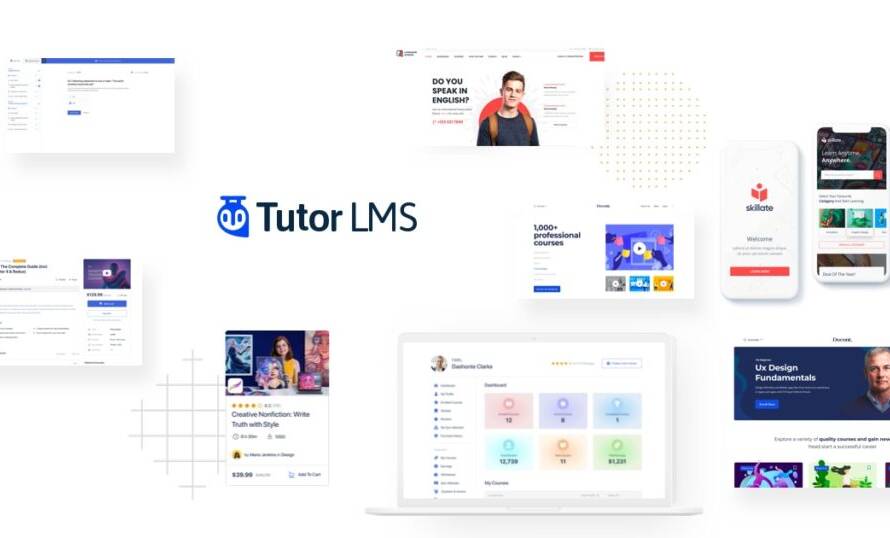Table of Contents
Introduction:
Animation has become a popular tool in web design to enhance the user experience and make websites more engaging. WordPress is the most widely used content management system, and it offers several ways to add animation to your site. From basic HTML5 and CSS3 animations to more complex motion graphics, this guide will show you how to bring life to your website using it in WordPress.

Part 1:
Basic Animations using HTML5 and CSS3 HTML5 and CSS3 provide the foundation for creating simple animations on your website. These technologies allow you to add animations that are lightweight, fast and smooth, without requiring any additional plugins.
1.1 Adding it to HTML elements You can add it to any HTML element on your page, such as images, buttons, and text. The basic process involves defining the animation using CSS, and triggering it using JavaScript. For example, you can make an image fade in when the page loads like this:
HTML:
pythonCopy code<img id="fade-in" src="your-image.jpg" alt="Your Image">
CSS:
cssCopy code#fade-in {
opacity: 0;
animation: fadeIn 1s ease-in;
}
@keyframes fadeIn {
from { opacity: 0; }
to { opacity: 1; }
}
JavaScript:
javascriptCopy codedocument.getElementById("fade-in").style.opacity = 1;
1.2 Creating CSS3 keyframe animations CSS3 keyframe animations allow you to create more complex animations, such as bouncing, rotating and scaling elements. For example, you can create a bouncing ball animation like this:
HTML:
bashCopy code<div id="ball"></div>
CSS:
cssCopy code#ball {
width: 50px;
height: 50px;
background-color: red;
border-radius: 25px;
animation: bounce 1s linear infinite;
}
@keyframes bounce {
from { transform: translateY(0); }
to { transform: translateY(-100%); }
}
Part 2:
Advanced Animations using Plugins While HTML5 and CSS3 animations are powerful, they can be limited in their functionality. Fortunately, there are several plugins available for WordPress that allow you to create more complex animations, such as parallax scrolling, particle effects, and dynamic page transitions.
2.1 Using Page Builders for Complex Animations Page builders, such as Elementor and Beaver Builder, provide an intuitive drag-and-drop interface for adding animations to your pages. They offer a wide range of pre-made animations, or you can create your own custom animations using their visual animation editor.
2.2 Adding Particle Effects with Particles.js Particles.js is a popular library for adding particle effects to your website. You can use it to create beautiful and engaging animations, such as a snow effect, or a particle background. To use Particles.js in WordPress, you can either add the library directly to your theme or use a plugin, such as the Particles.js
In conclusion:
It is a powerful tool for enhancing the user experience and making your website more engaging. WordPress provides several options for adding animations to your site, including basic HTML5 and CSS3 animations or more complex animations created with plugins.
It is important to consider the purpose and message of your animation, and how it can serve to support your content and goals for your website. When using animation, it is important to strike a balance between adding visual interest and not overwhelming your visitors.
Effective use of animation can help to capture the attention of your visitors, convey your message in a memorable way, and increase user engagement. This can be especially useful for landing pages, where you want to make a strong first impression and quickly convey your value proposition to visitors.
In addition to improving the user experience, animation can also help to improve website performance and speed, as animations created with HTML5 and CSS3 are lightweight and fast. This can help to improve the overall performance of your website and provide a better user experience for your visitors.
When using plugins to add more complex animations, it’s important to choose a plugin that is well-supported, regularly updated, and compatible with your current theme and plugins. This will help to ensure that your animations run smoothly and don’t negatively impact the performance of your website.
In summary, incorporating animation into your WordPress website can be a great way to enhance the user experience, increase engagement, and make your content stand out. Whether you’re adding simple animations or creating more complex motion graphics, animation is a versatile tool that can help you bring life to your website and deliver your message in a memorable way.


